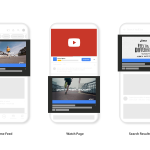
Lazy Loading and the Metaverse: Accelerating Virtual Worlds for Immersive Experiences
- Post
- August 9, 2023
- Lazy Loading, Web Performance, Web Technologies
- 0 Comments
As we embark on a journey through the boundless potential of the metaverse, it’s essential to understand the pivotal role that lazy loading plays in enhancing user experiences. The metaverse is an interconnected network of virtual and augmented realities, creating a seamless blend of digital and physical worlds. This intricate web of experiences requires efficient solutions for content delivery, and that’s where lazy loading steps in.
The Essence of Lazy Loading
Lazy Loading Unveiled: At its core, lazy loading is a resource optimization technique that focuses on loading content only when it’s needed. In the context of the metaverse, this means that elements within a virtual environment are loaded on-the-fly as users interact with them. This strategic approach prevents unnecessary loading times and conserves precious computational resources, thereby providing users with a seamless and immersive experience.
Accelerating the Metaverse with React LazyLoad
React LazyLoad: A Glimpse into Efficiency: One of the key players in the realm of lazy loading is React LazyLoad. This innovative library, built for the popular React framework, enables developers to implement lazy loading effortlessly. By deferring the loading of non-essential components until they come into view, React LazyLoad ensures that users are greeted with an agile and fluid metaverse experience.
Delving into React Lazy Loading Techniques: React LazyLoad empowers developers with multiple techniques to optimize content loading:
Image Lazy Loading: In a metaverse teeming with visuals, lazy loading images can significantly enhance performance. Images are loaded only when they’re visible to users, reducing initial load times and conserving bandwidth.
Component Segmentation: Complex virtual environments consist of various components. With React LazyLoad, these components can be segmented and loaded dynamically, preventing overwhelming initial loads and ensuring smooth navigation.
Dynamic Data Fetching: For immersive experiences driven by real-time data, dynamic data fetching comes into play. React LazyLoad allows data-driven components to load and refresh as new information becomes relevant.
Overcoming Latency Challenges
The Latency Labyrinth: One of the metaverse’s challenges is latency – the delay between user input and system response. Lazy loading plays a pivotal role in mitigating latency by loading content only when demanded, reducing the likelihood of users experiencing lag or delays.
Network Optimization: By minimizing the number of requests sent to servers at once, lazy loading significantly reduces the strain on networks. This optimization ensures a seamless flow of information, fostering a sense of immersion in the metaverse.
SEO Benefits of Lazy Loading
SEO and Lazy Loading Synergy: As we navigate the landscape of the metaverse, it’s crucial to recognize the symbiotic relationship between lazy loading and SEO. Google’s algorithm rewards websites with faster loading times, resulting in higher search rankings. Lazy loading directly contributes to this by improving page speed, leading to enhanced SEO performance.
Mobile Optimization: With an increasing number of users accessing virtual worlds through mobile devices, lazy loading becomes even more critical. Mobile devices often have limitations in terms of processing power and bandwidth. By loading content on demand, lazy loading ensures a smooth experience across various devices, enhancing user satisfaction and engagement.
The Intersection of Privacy and Performance
Privacy Considerations: In the metaverse, user privacy is paramount. Lazy loading can be leveraged to enhance privacy by deferring the loading of personalized content until users actively engage with it. This approach not only protects user data but also contributes to a more streamlined experience.
Final Words
In the ever-evolving landscape of the metaverse, the concept of lazy loading stands as a beacon of efficiency and optimization. By dynamically loading content when required, lazy loading ensures that virtual worlds are both immersive and responsive. As we venture further into this digital realm, embracing techniques like React LazyLoad and prioritizing user experience through minimized latency and enhanced SEO performance will be key to unlocking the true potential of the metaverse.
Commonly Asked Questions
Q1. How does lazy loading impact website performance?
Lazy loading significantly improves website performance by loading content on demand, reducing initial load times and conserving resources. This leads to smoother user experiences and better search engine rankings.
Q2. Can lazy loading be applied to all types of content?
While lazy loading is highly effective for images, videos, and data-driven components, it might not be suitable for all types of content. Critical content that provides essential information should still be loaded immediately to ensure a seamless experience.
Q3. Does lazy loading affect SEO negatively?
Lazy loading, when implemented correctly, can actually improve SEO performance. By enhancing page speed and user experience, it aligns with Google’s ranking factors and contributes positively to search rankings.
Q4. How does React LazyLoad work?
React LazyLoad defers the loading of components until they come into view. This library breaks down the content into segments, loading them dynamically as users navigate through the virtual environment, thus optimizing performance.
Q5. Can lazy loading be used in non-metaverse contexts?
Absolutely, lazy loading is a versatile technique that can benefit various digital platforms beyond the metaverse. Websites, applications, and other interactive experiences can all leverage lazy loading to enhance performance and user satisfaction.




